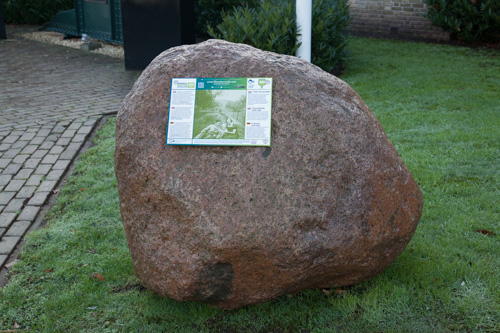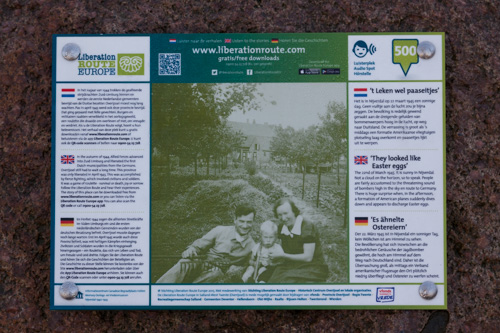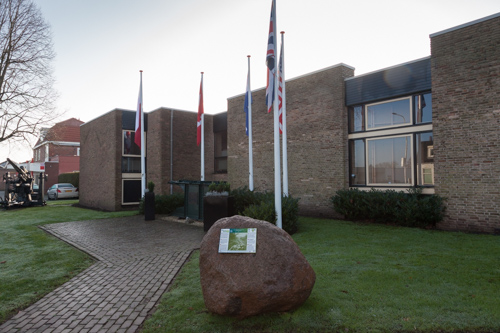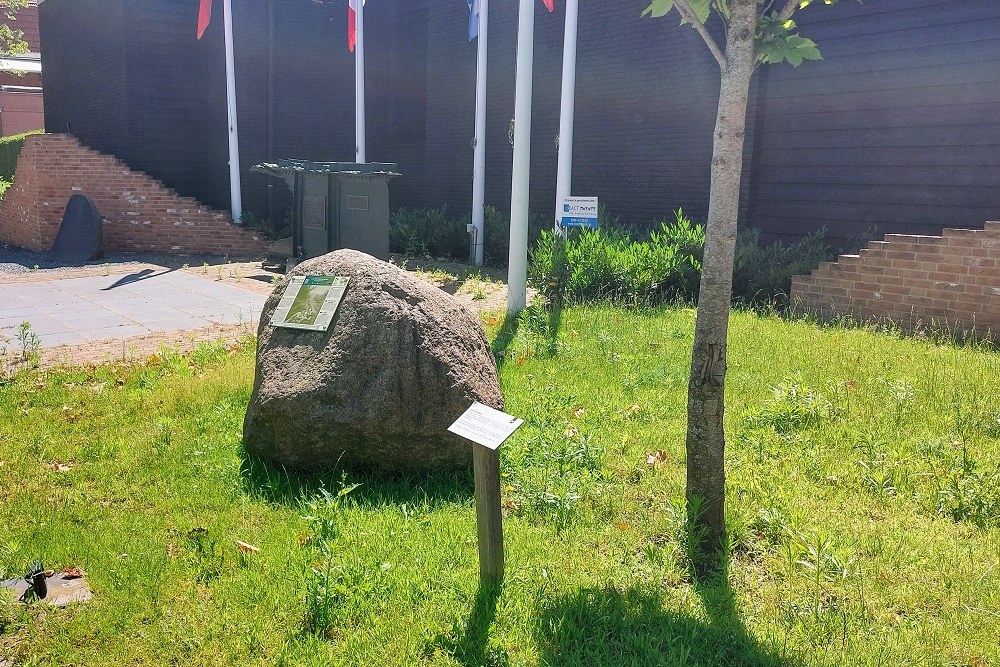Liberation Route Marker 500: They looked like Easter eggs
They looked like Easter eggs
The 22nd of March 1945. It is sunny in Nijverdal. Not a cloud on the horizon, so to speak. People are fairly accustomed to the threatening sound of bombers en route to Germany. There is huge surprise when, in the afternoon, a formation of American planes suddenly dives down and appears to discharge Easter eggs.
In the winter of 1944-1945, the Almelo-Zwolle railway line in Nijverdal has been the target of American bombers a number of times. The German V1 and V2 rocket installations in the municipality of Hellendoorn are also an important target for air strikes. Through this bombardment, the Allies attempt to block supply routes to and from Germany. Residents near the railway tracks in Nijverdal have moved as far away as possible or relocated elsewhere.
On the 22nd of March 1945, it is at last a beautiful sunny spring day and people in Nijverdal are glad that - just before Easter - they can again hang out their washing, do some gardening or scrub the floors. That afternoon, Auguste Lidolf and his son Eugène are planting cherry seeds. The Lidolf family moved from France to Nijverdal. Auguste is a mechanic operating the machines the Nederlandsche Stoom Blekerij purchased in France. His wife Louise is not at home that afternoon.
According to eyewitnesses, shortly after four o'clock, six planes suddenly fly low over the area. Above the village centre, they bank sharply and people can see the pilots in the cockpits. At the same time, they drop their bombs. Someone said they looked like Easter eggs. It was, after all, the week before Easter. But these Easter eggs had a devastating effect.
Later, it turned out that during this mistake bombardment, Nijverdal was subjected to three bombardments, during which 72 people lose their lives and dozens are wounded. Father and son Auguste and Eugène are also killed and would never see France again.
Audiospot - They looked like Easter eggs
Liberation Route Europe is a certified Cultural Route of the Council of Europe. With hundreds of sites and stories in nine European countries, the route links the main regions along the advance of the Allied Forces in 1943-1945.
The entire route consists of themed routes that can be travelled by by hiking, walking, cycling and car. These routes pass numerous historical and interesting sites and tell stories from a multitude of perspectives that were important in the final phase of World War II.
Many routes feature listening spots, offering the opportunity to listen to a historical story at a location. In addition, many ‘Vectors of Memory’ have been placed, indicating that the passer-by is on one of the Liberation Routes.
The routes can be found on the Liberation Route Europe website or in the app through which many stories can also be listened to.
Do you have more information about this location? Inform us!
Source
- Text: TracesOfWar & Liberation Route Europe
- Photos: Arjan Vrieze (1, 2, 3), Peter Schipper (4)
Nearby
Museum
Point of interest
- Launch Site V1 Hellendoorn - Nijverdal
- Crash Location 21 Lest We Forget Hellendoorn - Hellendoorn
- NAD Camp Wierden II - Wierden
Monument
- Memorial Victims Bombardments Nijverdal - Nijverdal
- Monument Charles Reeves Bridge Nijverdal - Nijverdal
- Memorial Killed Employees TenCate - Nijverdal
Cemetery
- Dutch War Graves Municipal Cemetery Hellendoorn - Hellendoorn
- Commonwealth War Graves Municipal Cemetery Hellendoorn - Hellendoorn
- Dutch War Graves Municipal Cemetery Rijssen - Rijssen
Remembrance Stone
- Stumbling Stones Keizerserf 32 - Nijverdal
- Stumbling Stones Rijssensestraat 101 - Nijverdal
- Stumbling Stones Wilhelminastraat 102 - Nijverdal







